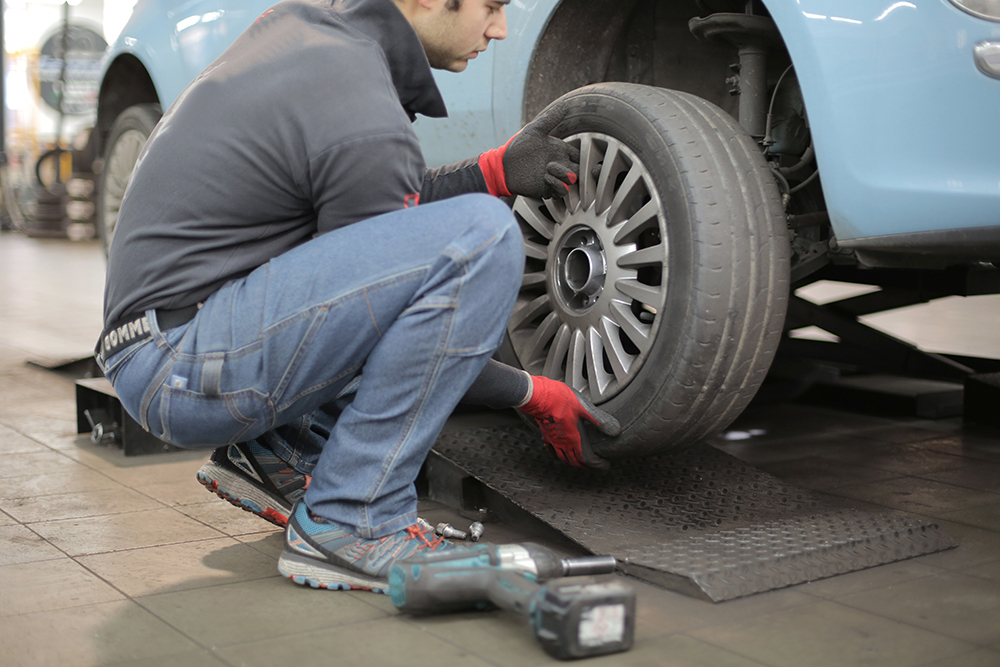Sixteen months ago, I sold almost everything I owned, hopped in a van outfitted for living, and hit the road. I had done a few short solo road trips in the past, but this was different. This was permanent. I didn’t have a place to call home anymore. Out there was where I lived now.
Nearly a year and a half later, I’ve learned a lot about nomad life and solo road tripping specifically, especially under the limiting parameters of a pandemic. Since sharing is caring, here are my expert tips on how to plan the best road trip in the year 2021 AC (After Covid).
Prepare your vehicle
Before embarking on any road trip that will take you more than a few hours from home, make sure your vehicle is prepared. Change your oil, top off your fluids, check your wipers, and rotate or upgrade your tires; the last thing you want on this mobile vacation is frustrating and expensive car trouble. If you’re not a card-carrying AAA member, consider becoming one. (Road trips notwithstanding, it’s great coverage to have in an emergency.) Because I’m on the road full time now, often in remote areas, I have the premier membership plan that provides me with full benefits, including up to 200 miles of towing, an important perk if the nearest service center is a long distance away. There are lower, less costly levels of coverage that you can purchase to fit your individual needs.
Make sure you know where all your vehicle’s tools – including spare tire and its change kit – are located too. I was once driving on New York’s back roads late at night with no cell service when I blew a tire that required me to change it. I spent an hour frightened in the middle of nowhere frantically searching my Volkswagen for the tire-changing tools before locating it in a hidden compartment that I failed to familiarize myself with before I desperately needed it. It’s also critical that you learn how to change a flat yourself if you don’t already know how. Don’t be embarrassed to ask a friend or family member to show you. If you want to DIY it, YouTube has plenty of videos, some specific to your vehicle’s make and model. Or, if you prefer a little eye candy with your manual labor tutorials, let one of the hot bois of TikTok educate you.
Flares also are important to have on hand for two reasons: So other vehicles can see your vehicle in the dark and avoid crashing into it by accident and to alert emergency services that you may need assistance. A police officer will stop to help if they see flares marking your vehicle’s location. You’ll welcome that help if you’re stranded at night with no way to contact anyone else.
Rest up and start early
I hate being rushed and I hate driving long distances, but I often can’t help the latter if I have to be from A to B in a short period of time. To allow myself ample breaks on the road, I leave as early as I can with sufficient rest from the night before. I don’t drive more than two hours straight without taking a reprieve, and I try to find interesting stop-offs along my route that will allow me to stretch my legs and take my mind off driving for a bit.
Your start time plays an important role in how efficiently you’ll get to where you’re going. If I’m departing from a metro area, I always leave after morning rush hour to avoid beginning-of-day traffic that will automatically stress me out. Your road trip should be fun; don’t put yourself in a position to get flustered as soon as you leave your driveway.
Have a destination in mind
Some road trippers love the element of surprise on their adventures by ending up where they end up. Not me. I like to have a plan with a destination in mind. Specifically, it’s wise to know where you’ll end up, so you know where you’re staying the night. You don’t want to travel all day just to pull into a city or town that has no vacancy at its lodging choices. You’ll be forced to get back on the road and drive further, and probably out of your way in the dark, to find a safe place to sleep. That’s not ideal on any trip, and certainly not while traveling queer and solo.
 Add fun stops along the way
Add fun stops along the way
To break up the monotony of driving (it’ll get tiresome if you’re traveling mundane highways with equally unremarkable scenery), I choose a few attractions to stop at along my route.
I love taking an hour or two to explore a small town’s shops and cafes, peruse an antique mall (great for picking up meaningful mementos of your travels), or visit historic sites, national monuments and parks. I have an annual National Parks pass, available for $80 at USParkPass.com, which grants access to more than 2,000 federal recreation sites that fall under the jurisdictions of the National Park Service, U.S. Fish and Wildlife Service, Forest Service, US Army Corps of Engineers, Bureau of Land Management, and Bureau of Reclamation. Some of these sites require entry fees of $30 or more, which allows the annual pass to pay for itself in a few visits.
When setting your GPS, type in national monuments to see what’s available along the way. I recently traveled to Birmingham and Montgomery, Ala., and discovered the Freedom Riders National Monument, one of the National Park Service’s newest installations. I would have driven right past it if I hadn’t done the advance research. Plus, I got a little civil-rights history lesson during my stop – something we can all use in this day and age.
Make it a little gay
With gay bars dwindling in number across the country it can be difficult to find one in less populated areas, and it’s not the best decision to get tipsy in an unfamiliar area when you have to hit the road the next day. In lieu of those options, I look for bathhouses, clothing-optional hot springs (I love a good naked time), and LGBTQ campgrounds for an opportunity to unwind with likeminded folk. You’ll be surprised at how many of these exist when you start searching for them. I can almost guarantee you’ll find at least one of these destinations within four hours of your home.
These places are often much less expensive than mainstream destinations as well. For instance, I stayed in my van at the Oz Campground in Unadilla, Ga., for three nights this spring for around $170 total, and I popped into the El Dorado Hot Springs outside of Phoenix, Ariz., during my travels late last year for $30 a night. Day passes are even more affordable if you don’t plan to stay overnight. Pop in for a little R&R and be on your merry gay way.
















